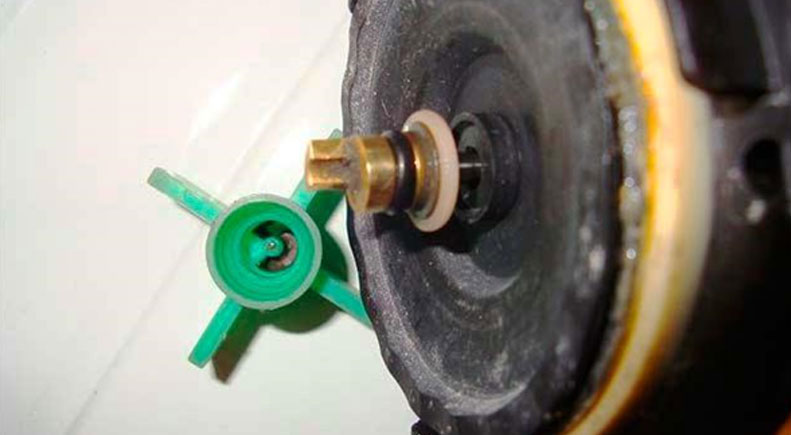
If every second person can get the pump out of the washing machine, then disassembling the drain pump of an LG washing machine is somewhat more difficult. Of course, it’s easier to throw out the problematic part and install a new one in its place, but replacement is not always cheaper than repairing it yourself. For those who don’t want to spend money, we suggest learning how to properly be digging in the drainage device.
You can't fix the pump without disassembling it. Only by getting under the housing can you check whether the impeller rotates completely on the shaft and how well the clamps hold the part. Especially if the blades do not rotate in the absence of visible reasons for stopping (when there is no debris, dirt, hair on the pump). Then the problem that prevents complete drainage is hidden inside the device, and you need to find it. To open the pump from the LG washing machine, you need to follow the following algorithm:
Less common, but there are non-separable types of pumps, which, despite their name, are quite suitable for repair. It is only necessary to apply a special approach to the mechanism. So, let's do it like this:
Once the cover is removed, the pump device is completely disassembled. All that remains is to repair the part. To do this, we clean the removed and remaining parts from accumulated debris, remove the magnet from the shaft and lubricate all the bearings (both the removed one and those located at the bottom of the housing) with a special compound. Afterwards we return the pump to its original form. For the lid to fit tightly again, you need to press it until you hear a characteristic click.
If after checking it turns out that the pump cannot be repaired, you will have to replace the faulty part with a new analogue. We purchase a pump using the serial number of the device or washing machine and install it in place of the old one. The connection process is identical to the dismantling technique, so there is no point in describing it in detail.
It is worth understanding that disassembling the pump yourself is a risky undertaking. To protect yourself from unnecessary costs, you should first make sure that this is really the problem. It is likely that completely different reasons led to the sudden stop of the LG machine. You can eliminate the error by consistently checking all the sore points of the drain system.
To control the troubleshooting process, it is recommended to run a test wash after each test step. If the pump still does not work, you will have to solve the problem with it. We turn off the washing machine, remove the pump from it and begin to disassemble it according to the instructions discussed above.
Copyright © 2020 Coimbatore Service.